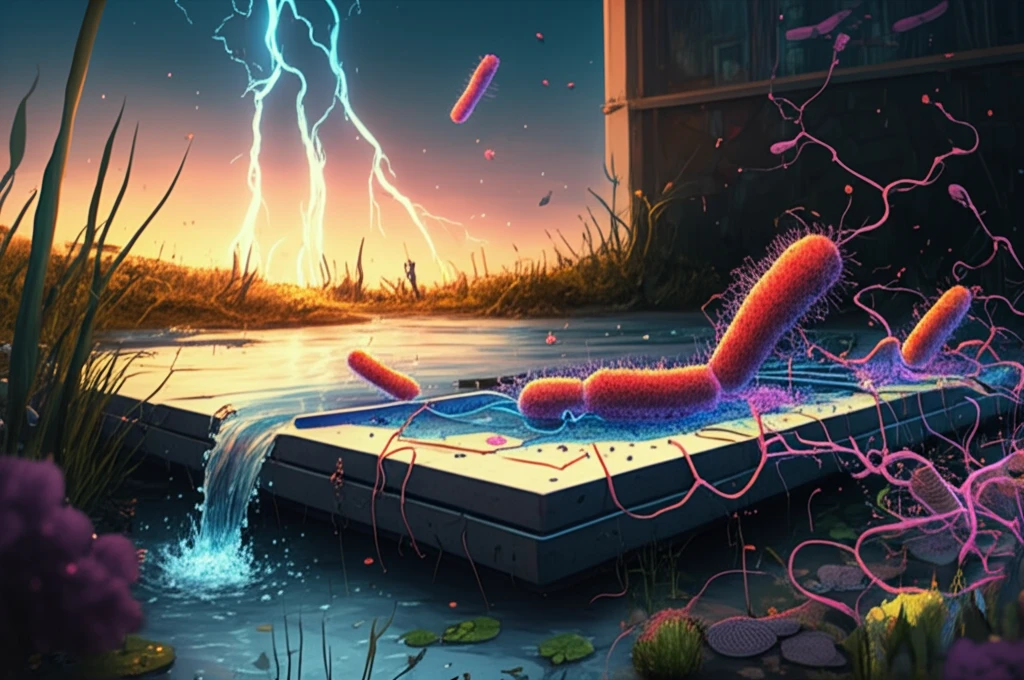
Clean Energy Breakthrough: Can Microbial Fuel Cells Revolutionize Wastewater Treatment?
"Harnessing the Power of Microbes: A Deep Dive into Sustainable Greenhouse Gas Reduction Strategies"
In an era defined by the urgent need for sustainable solutions, constructed wetlands (CWs) have emerged as a vital technology for wastewater treatment across the globe. These engineered ecosystems offer a natural and cost-effective method for purifying water, but they also present a hidden challenge: the emission of greenhouse gases (GHGs).
While CWs are effective in removing pollutants, the microbial processes involved in breaking down organic matter can release carbon dioxide (CO2), methane (CH4), and nitrous oxide (N2O)—potent GHGs that contribute to climate change. Understanding and mitigating these emissions is crucial for ensuring that CWs truly serve as an environmentally friendly solution.
Now, an innovative approach is gaining traction: integrating microbial fuel cells (MFCs) into CWs. This technology harnesses the power of electrochemically active bacteria to not only treat wastewater but also generate electricity, offering a potential pathway to reduce GHG emissions and create a more sustainable system. Let's explore how this integration works and what the latest research reveals about its impact.
How Microbial Fuel Cells Slash Greenhouse Gases in Wetlands

The integration of microbial fuel cells (MFCs) into constructed wetlands (CWs) presents a groundbreaking approach to wastewater treatment. MFCs leverage the natural interactions between microbes to drive an electrochemical process that not only cleans water but also reduces the emission of harmful greenhouse gases. Here's a closer look at how this innovative system works:
- Methane Mitigation: By promoting the activity of electrogens, MFCs suppress the production of methane (CH4), a potent greenhouse gas formed during the anaerobic decomposition of organic matter.
- Nitrous Oxide Reduction: MFCs enhance the denitrification process, converting harmful nitrous oxide (N2O) into harmless nitrogen gas. This is achieved by providing electrons that facilitate the reduction of nitrite and nitrate.
- Carbon Dioxide Management: While MFCs may increase carbon dioxide (CO2) emissions due to enhanced organic matter degradation, the overall reduction in CH4 and N2O emissions results in a significantly lower global warming potential.
The Future of Wastewater Treatment
The integration of microbial fuel cells into constructed wetlands represents a significant step forward in sustainable wastewater treatment. By harnessing the power of microbes to reduce greenhouse gas emissions and generate electricity, CW-MFCs offer a promising solution for a cleaner, more sustainable future. As research continues and technology advances, we can expect to see even greater improvements in the efficiency and effectiveness of these innovative systems.
